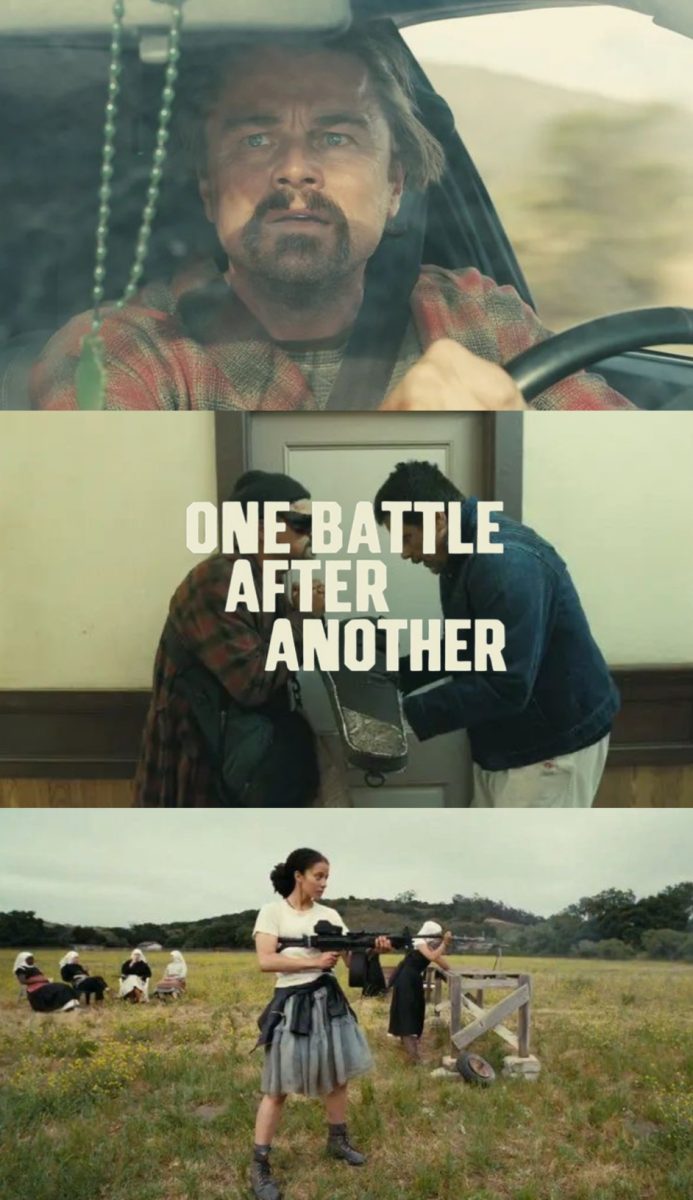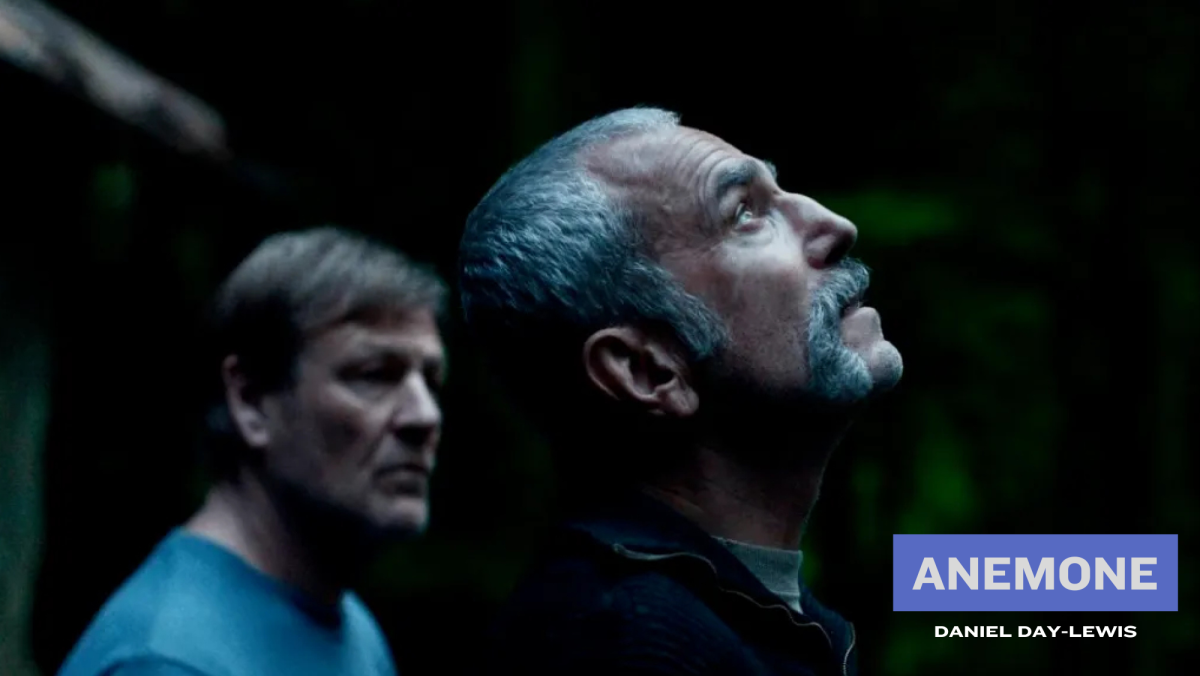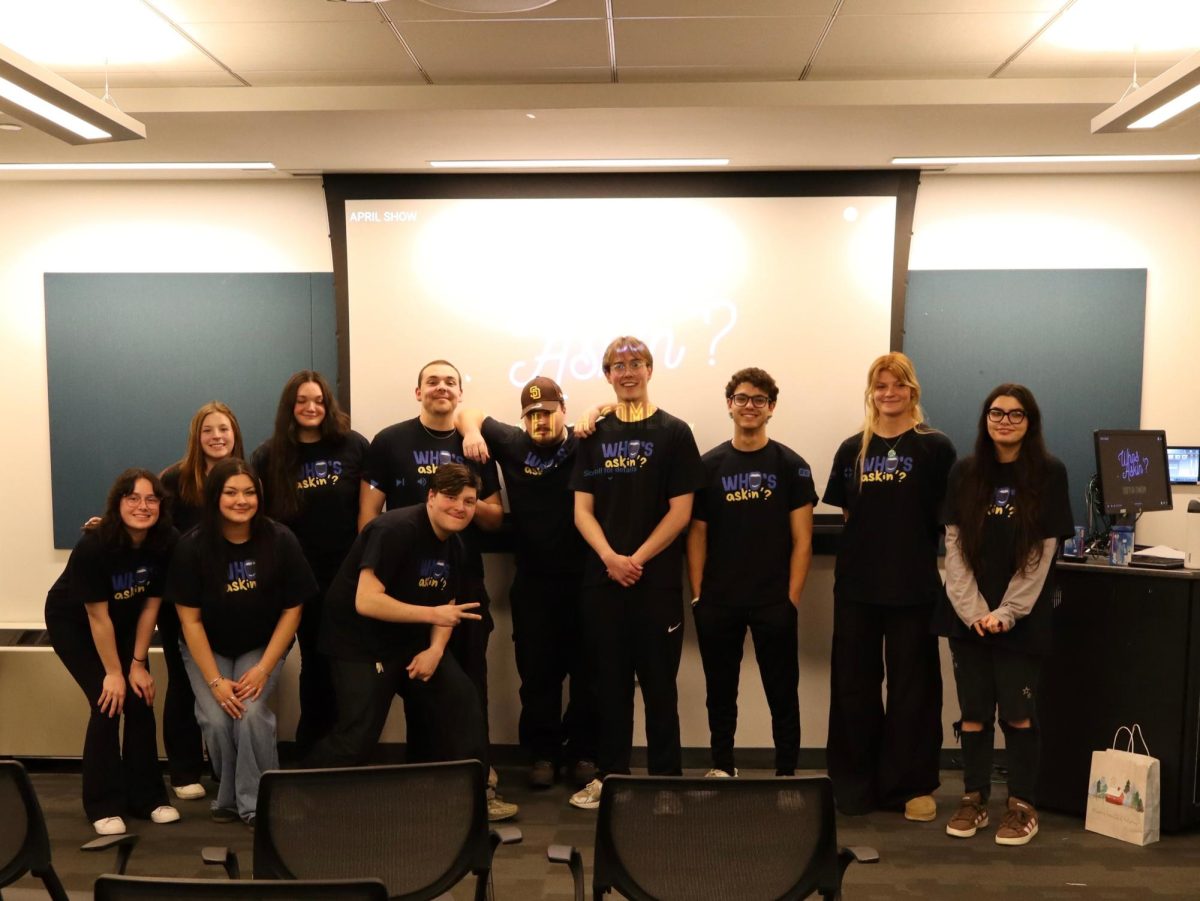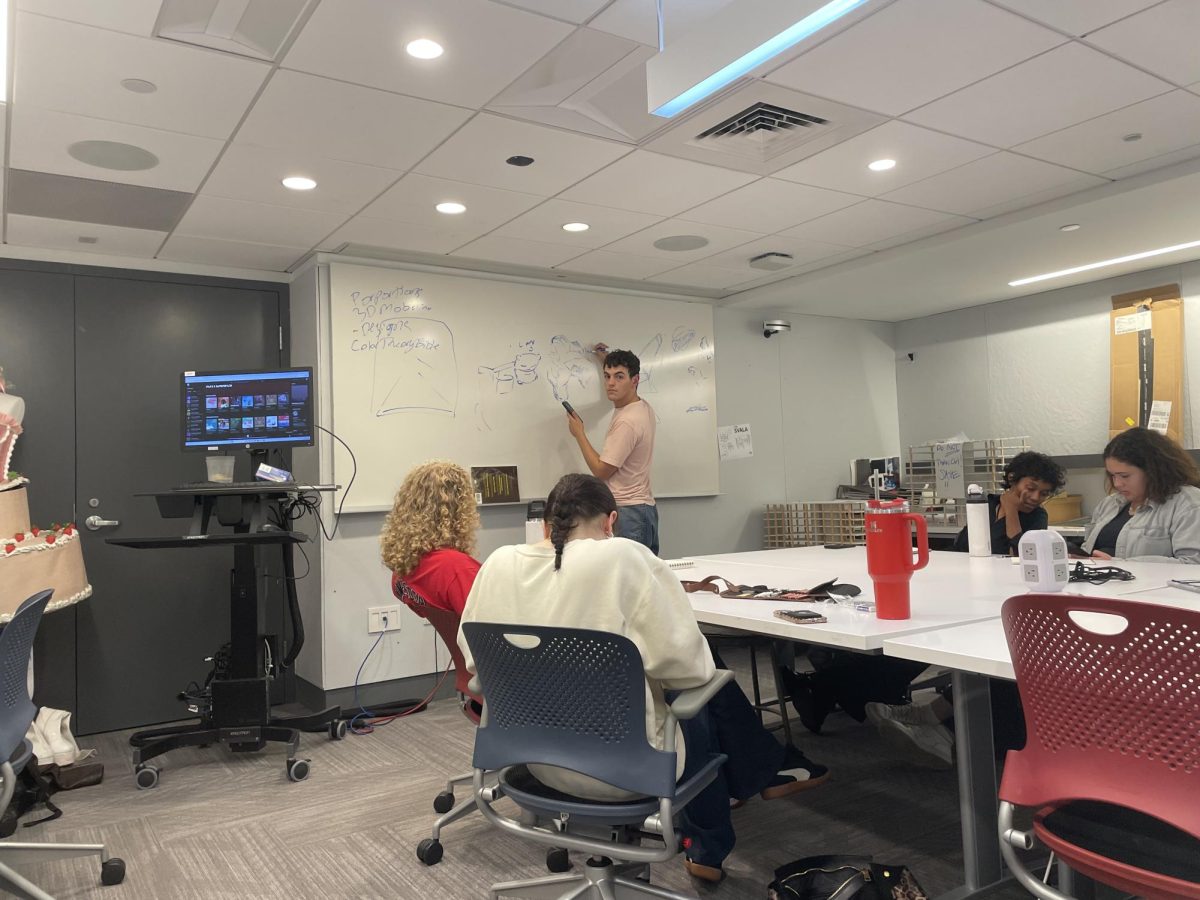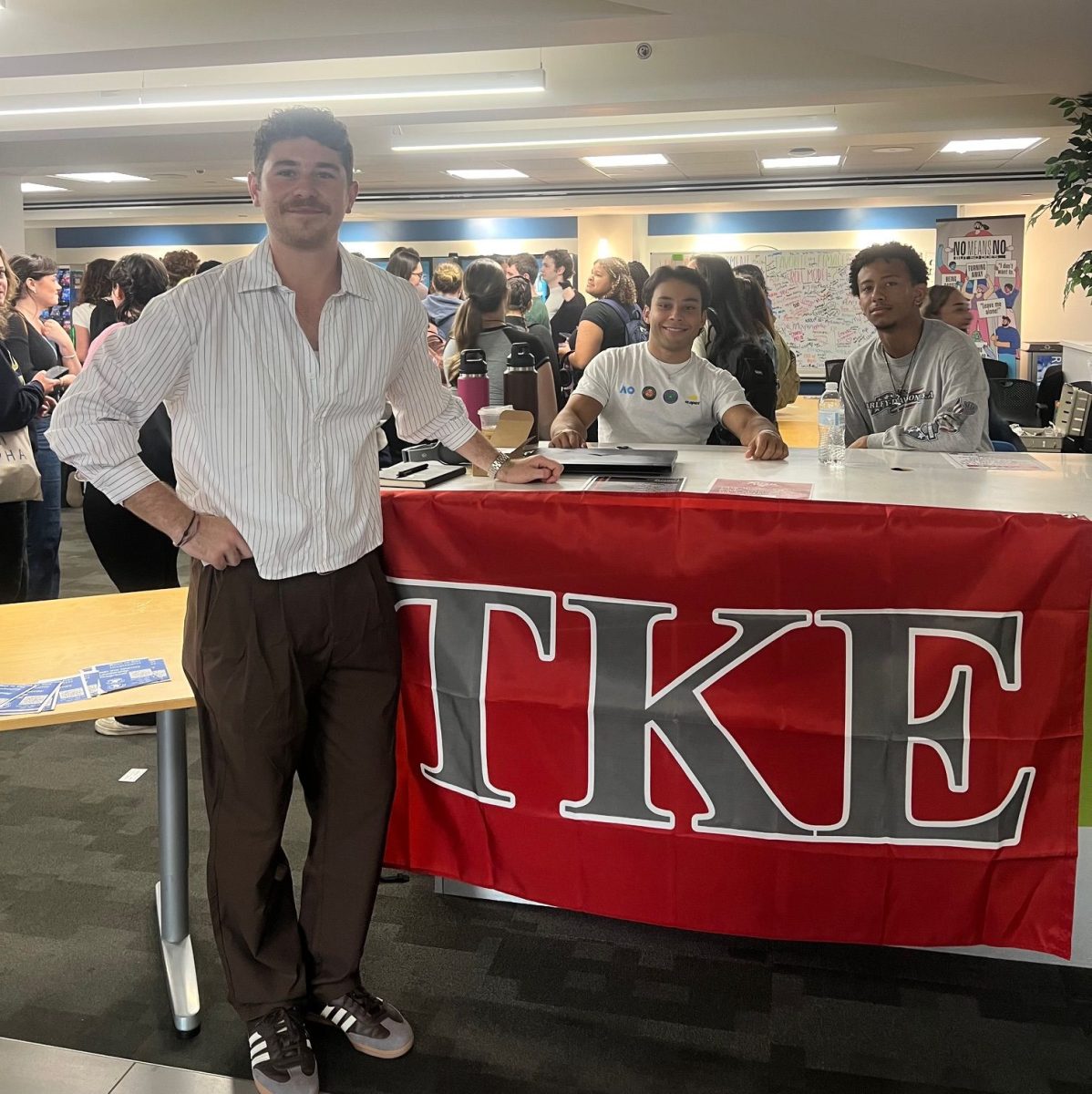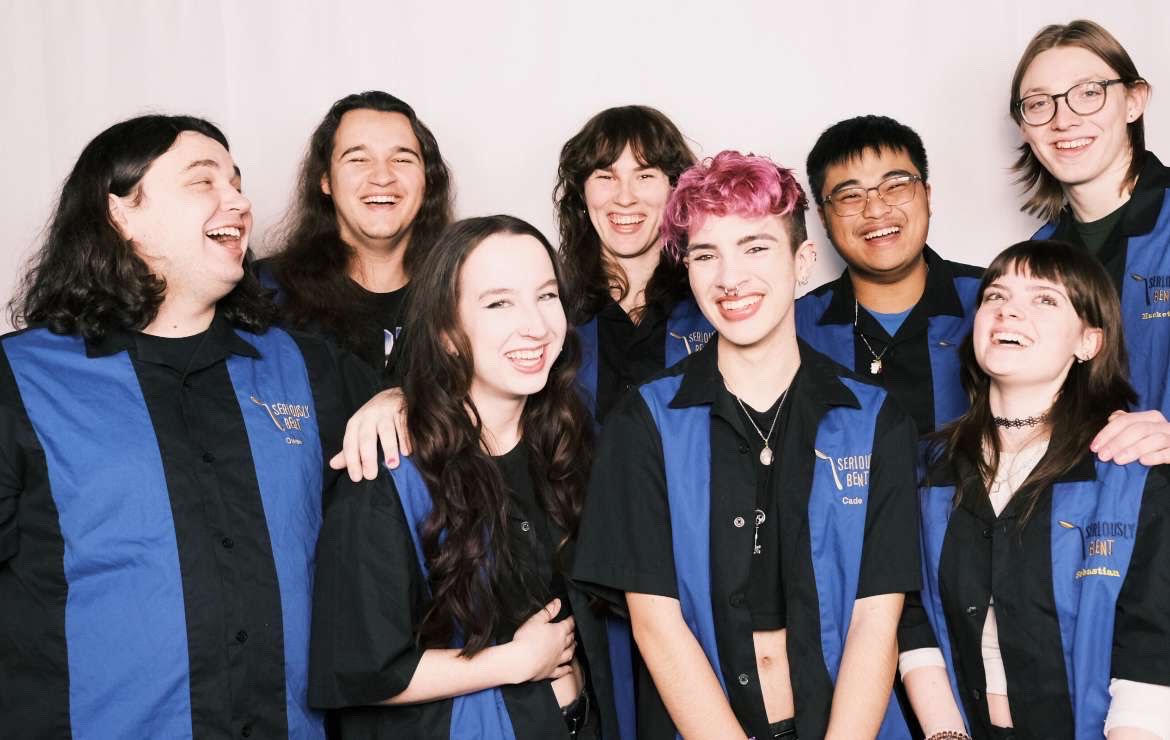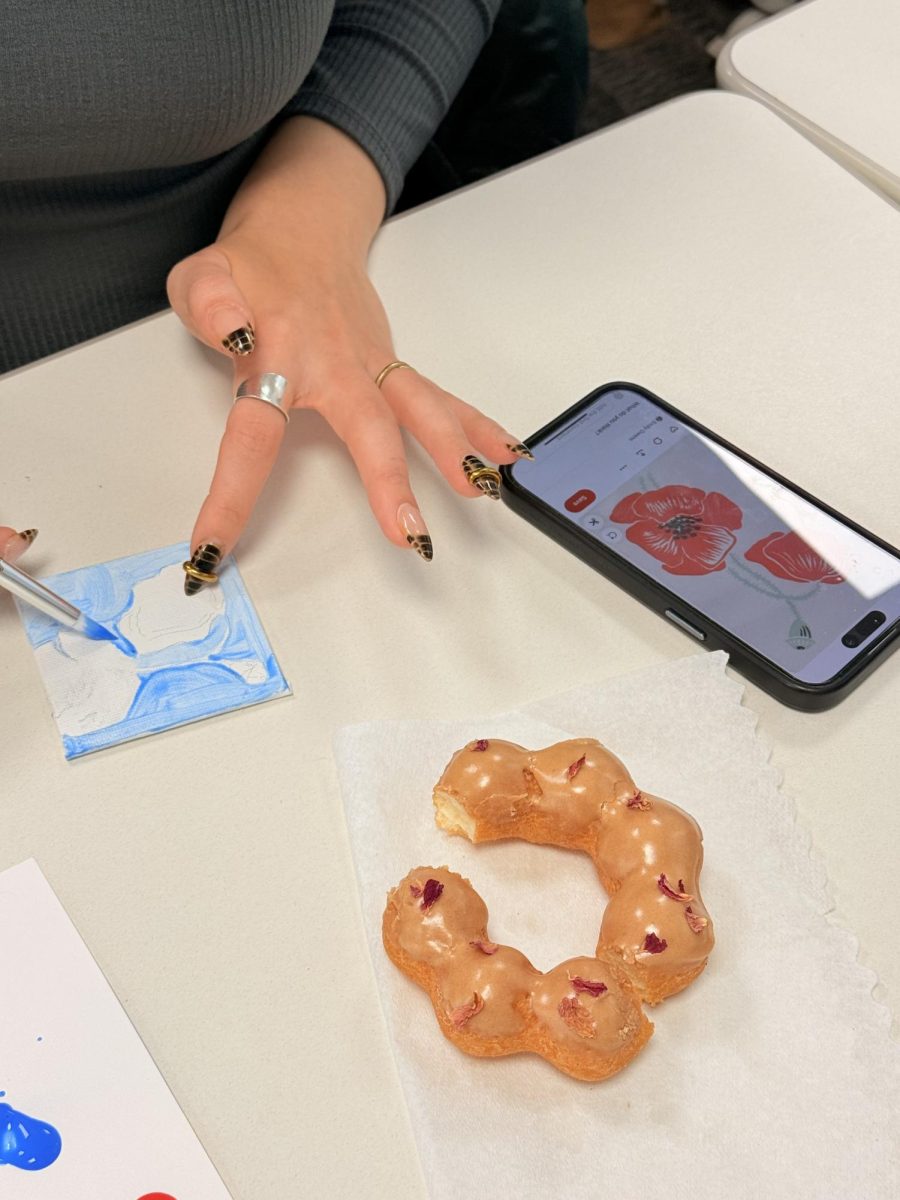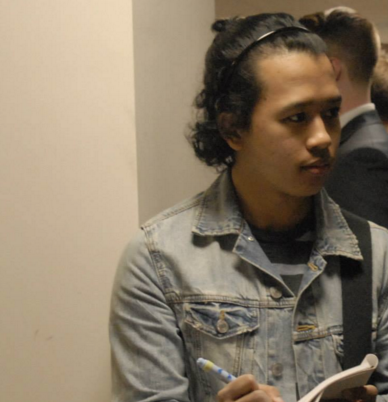Cryptogam, the Greek word for “hidden marriage” or hidden reproduction, has made an appearance at the New England School of Art and Design in an exhibit where artists can talk about the intersection of art and science.
Brian Knep is one of the artists showcased in the gallery. One of his pieces, titled “Assembly Line,” is a video showing forty embryos that grow in a simulation of the Fitz-Hugh Nagumo model and embryos, which are ceramics that he formed based on his own equations.
The exhibit was organized by Deborah Davidson, who plans a recurring fall series that showcases science and art in one form. Davidson was acquainted with Knep prior to the lecture and invited him to participate based on his passionate background in both the art and science fields.
Knep uses the example of zebra stripes to help explain his work which he said explored repetition and uniqueness. Zebras have different pigment molecules, and although each animal seems to have the same pattern, one set of stripes is never the same as another.
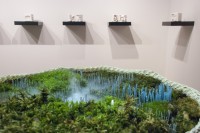
Knep uses this idea in his artwork, where he came up with the system of equations to form the shapes. The structure is never the same as the previous one despite the use of the same equation because he tweaks the placing of the blobs, which can completely change the outcome of the shape.
Knep also chose to use ceramics rather than rubber to build the structures because it has a greater mass and a more earthy texture.
Natalie Andrew, the second artist featured in the cryptogam exhibit, is also a biologist at Harvard University.
Andrew built living arts with the cryptogams of mosses, and spores, which are constantly hydrated by water spouting from the middle of the pieces while mist circulates around it.
Andrew said her inspiration for using these came from her own work and how the symbiosis of algae and fungus was immensely different from that of mammals. They are also considered plants found close to the ground in the forest. She also alluded to the idea that much of her work in this exhibition was inspired by her homesickness for England, where she is from.
Another speaker at the exhibit was professor Martha Richmond of the chemistry department, who Davidson referred to as a scientist with an open mind when it comes to the relationship between art and science. Richmond told a brief story, expanding on the theme of how art can be both a healing and thinking process.
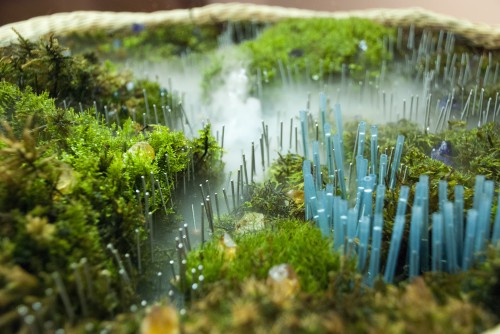
Richmond encountered a young woman who used her bald head as a canvas for art when she was going through chemotherapy. The woman told Richmond that it was the best restorative experience she could have rather than sitting around feeling sorry for herself.
“This is a creative enterprise but what we have to realize is to see it as a very expansive thinking,” said Richmond.



